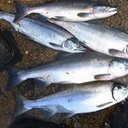Response to treatment of myasthenia gravis according to clinical subtype.
Paraules clau
Resum
BACKGROUND
We have previously reported using two-step cluster analysis to classify myasthenia gravis (MG) patients into the following five subtypes: ocular MG; thymoma-associated MG; MG with thymic hyperplasia; anti-acetylcholine receptor antibody (AChR-Ab)-negative MG; and AChR-Ab-positive MG without thymic abnormalities. The objectives of the present study were to examine the reproducibility of this five-subtype classification using a new data set of MG patients and to identify additional characteristics of these subtypes, particularly in regard to response to treatment.
METHODS
A total of 923 consecutive MG patients underwent two-step cluster analysis for the classification of subtypes. The variables used for classification were sex, age of onset, disease duration, presence of thymoma or thymic hyperplasia, positivity for AChR-Ab or anti-muscle-specific tyrosine kinase antibody, positivity for other concurrent autoantibodies, and disease condition at worst and current. The period from the start of treatment until the achievement of minimal manifestation status (early-stage response) was determined and then compared between subtypes using Kaplan-Meier analysis and the log-rank test. In addition, between subtypes, the rate of the number of patients who maintained minimal manifestations during the study period/that of patients who only achieved the status once (stability of improved status) was compared.
RESULTS
As a result of two-step cluster analysis, 923 MG patients were classified into five subtypes as follows: ocular MG (AChR-Ab-positivity, 77%; histogram of onset age, skewed to older age); thymoma-associated MG (100%; normal distribution); MG with thymic hyperplasia (89%; skewed to younger age); AChR-Ab-negative MG (0%; normal distribution); and AChR-Ab-positive MG without thymic abnormalities (100%, skewed to older age). Furthermore, patients classified as ocular MG showed the best early-stage response to treatment and stability of improved status, followed by those classified as thymoma-associated MG and AChR-Ab-positive MG without thymic abnormalities; by contrast, those classified as AChR-Ab-negative MG showed the worst early-stage response to treatment and stability of improved status.
CONCLUSIONS
Differences were seen between the five subtypes in demographic characteristics, clinical severity, and therapeutic response. Our five-subtype classification approach would be beneficial not only to elucidate disease subtypes, but also to plan treatment strategies for individual MG patients.


